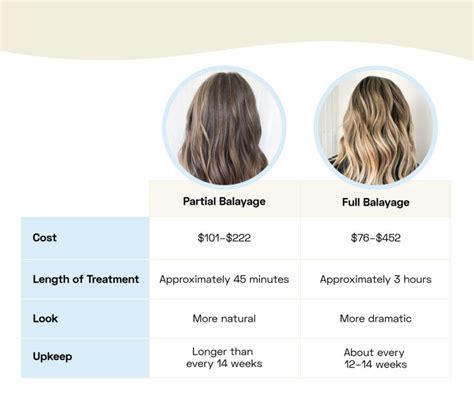Introduction
Highlights are a popular hair coloring technique that can add depth, dimension, and warmth to your locks. But there are two main types of highlights: partial highlights and full highlights. While both techniques can achieve beautiful results, they differ in their scope, cost, and maintenance requirements. This article will provide a comprehensive comparison of partial highlights vs. full highlights hair to help you make an informed decision about which technique is right for you.

Partial Highlights
Definition: Partial highlights involve applying highlights to select sections of your hair, typically the top layers and around the face. This technique creates a subtle, natural-looking effect that can enhance your hair’s overall color and texture.
Benefits:
- Less damaging: Partial highlights only treat a portion of your hair, reducing the potential for chemical damage compared to full highlights.
- More affordable: The cost of partial highlights is typically lower than full highlights due to the reduced amount of dye and time involved.
- Lower maintenance: Partial highlights require fewer touch-ups than full highlights because the outgrowth is less noticeable.
Full Highlights
Definition: Full highlights involve applying highlights to all of your hair, from the roots to the tips. This technique creates a more dramatic, bold look that can completely transform your hair color.
Benefits:
- More coverage: Full highlights provide complete coverage, eliminating any unwanted base color and ensuring a uniform, blended look.
- Higher impact: The full coverage of full highlights creates a more noticeable and striking effect.
- More versatile: Full highlights can be customized to achieve a wide range of looks, from subtle to bold.
Comparison Table: Partial Highlights vs. Full Highlights
| Feature | Partial Highlights | Full Highlights |
|---|---|---|
| Scope | Select sections of hair | All of the hair |
| Effect | Subtle, natural | Dramatic, bold |
| Damage | Less damaging | More damaging |
| Cost | More affordable | More expensive |
| Maintenance | Less frequent touch-ups | More frequent touch-ups |
| Versatility | Limited customization | Highly customizable |
Key Considerations
When choosing between partial highlights and full highlights, consider the following factors:
- Hair Type: Partial highlights are ideal for those with finer hair or who prefer a more natural look. Full highlights are better suited for thicker hair or those who want a more dramatic change.
- Lifestyle: Partial highlights require less maintenance and are suitable for those with busy schedules. Full highlights require more frequent touch-ups and may not be ideal for those who don’t have the time or budget for regular salon visits.
- Desired Look: Partial highlights provide a subtle enhancement, while full highlights create a more transformative effect. Consider your personal style and preferences when making your decision.
Cost Comparison
The cost of highlights varies depending on the length of your hair, the number of highlights applied, and the skill level of the stylist. According to the National Center for Statistics and Analysis (NCSA), the average cost of partial highlights ranges from $120 to $200, while full highlights can cost between $200 and $500.
Maintenance Requirements
Partial highlights typically require touch-ups every 6-8 weeks, while full highlights may need to be touched up every 4-6 weeks. The frequency of touch-ups will depend on the rate of hair growth and the extent of the highlights.
Step-by-Step Approach to Partial Highlights
- Section the hair: Divide the hair into small sections and clip away the sections that will not be highlighted.
- Apply bleach: Mix bleach with developer and apply it to the selected sections of hair.
- Process: Allow the bleach to process for the recommended amount of time, checking the hair regularly to monitor lightening.
- Rinse and tone: Rinse the bleach thoroughly and apply a toner to neutralize any unwanted yellow tones.
- Style as desired: Blow dry or style the hair to complete the look.
Step-by-Step Approach to Full Highlights
- Section the hair: Divide the hair into small, even sections.
- Apply bleach: Mix bleach with developer and apply it to all of the hair, from roots to tips.
- Process: Allow the bleach to process for the recommended amount of time, checking the hair regularly to monitor lightening.
- Rinse and tone: Rinse the bleach thoroughly and apply a toner to neutralize any unwanted yellow tones.
- Style as desired: Blow dry or style the hair to complete the look.
Conclusion
Partial highlights and full highlights are both effective techniques for adding depth, dimension, and warmth to your hair. While partial highlights offer a more natural, subtle look, full highlights create a more dramatic, head-turning effect. The best choice for you will depend on your individual hair type, lifestyle, and desired look. By considering the factors discussed in this article, you can make an informed decision that will help you achieve the perfect highlighted hairstyle.
